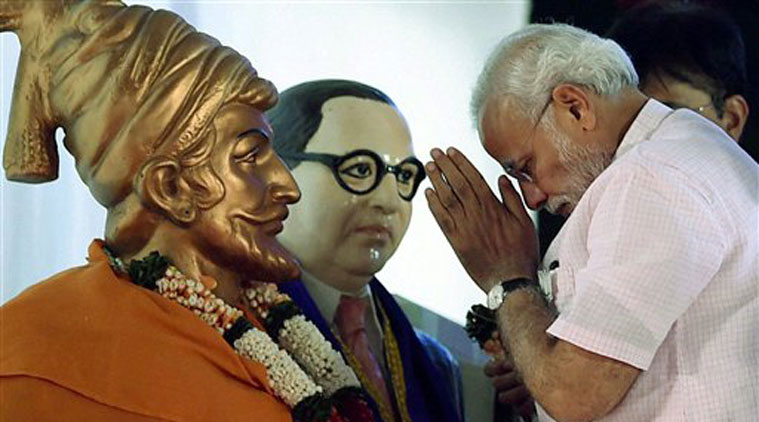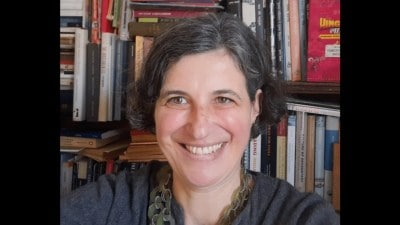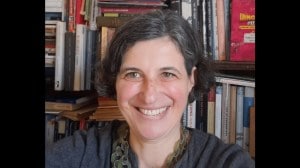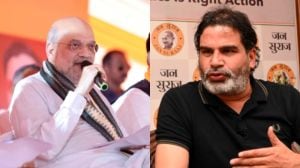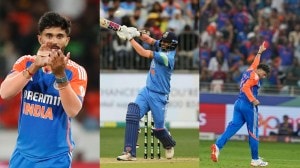In Maharashtra, Modi’s strategy: be more Marathi than the Marathis
He speaks local dialects, invokes regional heroes, wears traditional attire.
It took less than a minute to apply the pandari tika on his forehead, and the transformation was complete. There was Prime Minister Narendra Modi dressed like Sant Tukaram — round pagdi, long-sleeved kurta and the traditional shawl — at an election rally in Pune, near where the poet hailed from.
The BJP’s star campaigner has also been spotted wearing a Kolhapuri pheta, the traditional headgear, in an election advertisement — and even a Mavla topi, once worn by Maratha soldiers, in a promotional video for the party candidate in Thane.
With electoral alliances breaking and just four days left for voting in Maharashtra, Modi’s carefully crafted metamorphosis is a clear indication of his campaign strategy. He has chosen to be more Marathi than the sons of the soil.
From speaking the local language, even region-specific dialects, in all his campaign speeches to evoking the state’s poets and social leaders, Modi’s campaign managers have ensured that the allegation of “Gujarati bias” levelled by Shiv Sena and Maharashtra Navnirman Sena has not gained much ground.
As he did in his public gathering at Mumbai’s Bandra Kurla Complex ahead of the Lok Sabha elections, Modi chose to open with Marathi in all the twelve public gatherings that he has addressed in the state since October 4.
For instance, on October 7, at Sindkheda in Dhule district, Modi began his speech: “Ram ram mandali, kasa kay, bare ase na?” He even got the pause right, before continuing, “Khandeshi paavan bhoomiche me vandan karto (I bow down to this pristine earth of Khandesh).”
His speechwriters have also dug into the state’s history to pull out legendary figures from almost every rally venue for him to refer to in his campaign speeches.
In Nashik, he mentioned the names of freedom fighter and RSS ideologue Vinayak Damodar Savarkar; social worker Bhaurao Krishnaji Gaikwad; and Marathi poet V V Shirwadkar who died there. In fact, when he mentioned Shirwadkar by his pen name Kusumagraj, the crowd responded with a giant roar.
Likewise in Aurangabad, where Modi began his speech by saying, “Marathwada cha punyabhoomi la me vandan karto (I bow down to the virtuous land of Marathwada).”
There were subtle nuances, too. In Aurangabad, he wooed the crowd by acknowledging that he was speaking from the ‘karmabhoomi’ of revered Varkari poets such as Sant Eknath, Dnyaneshwar and Namdeo. While the three names are generally taken together with Sant Tukaram, Modi left out the latter who hailed from Dehu, closer to Pune.
In Sangli’s Tasgaon, famous for its Ganpati temple on the banks of the Krishna, he said, “Shri Ganesha la shat shat naman (A hundred prayers to Lord Ganesh).” The crowd broke into thunderous applause when he added, “Sangli sarvat changli (Sangli is the best)”.
If he remembered Ganesha in Sangli, his thoughts were with a goddess in Kolhapur’s Kalamba, home of the famous Mahalaxmi temple.
In Mumbai, speaking from the Mahalaxmi racecourse, Modi’s language was all about development. Still speaking in Marathi, he said, “Maharashtra che jante la sampoorna vikasachi me jahir hami deto (I assure complete development for the people of Maharashtra).” Again, to thunderous applause.
The strategy seems to have filtered down the BJP ranks, too. Several local candidates have been using volunteers dressed up as Vasudevs — traditional Maharashtrian folk singers sporting conical peacock feather caps —to sing the party’s praises in various constituencies.
“We have Vasudevs moving from area to area, singing songs to tell people that the BJP is for all, that the party is not dividing people on linguistic basis. Plus, I am a mill worker’s son. I am telling people about my humble background,” said Vilas Ambekar, BJP’s candidate from Mumbai’s Marathi heartland of Dadar-Mahim.
Obviously, the rivals are not impressed.
Sada Sarvankar, a senior Shiv Sena leader and the party’s candidate from the Mahim constituency, played down any so-called Modi effect. “Narendra Modi has not studied Maharashtra’s history. Talking about historically important personalities and litterateurs in his speeches does not mean that he knows anything about them, their work. It is his style. It is not going to necessarily influence voters because they know what is really going on in his mind.”
BJP spokesperson Keshav Upadhye stressed that the party hadn’t changed its campaign specifically to show its Marathi roots.
“We had already designed our advertisements in Hindi and English as well as Marathi, including the series ‘Kuthe neun thevlay Maharashtra majha’ (What has happened of my state?)’. More than half our candidates in Mumbai are Marathi. Nothing has changed in our campaign strategy. People will vote for development and not on linguistic grounds,” he said.





- 01
- 02
- 03
- 04
- 05


